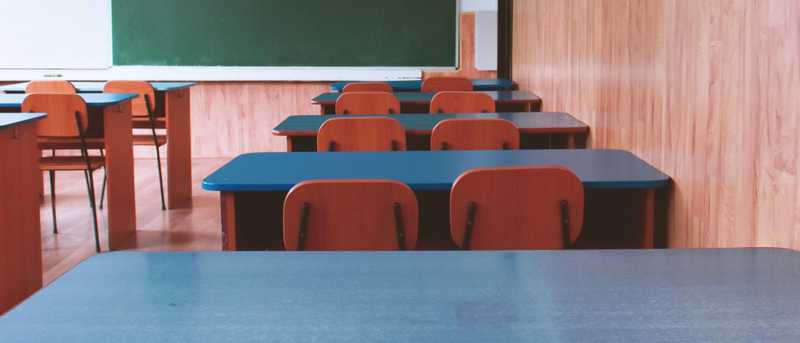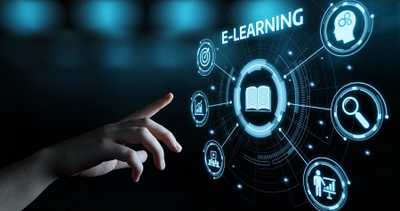20-minute read
At Yup, we never stop learning! That's why we’ve been taking time to chat with fellow educators on the subjects we're most curious about. Moving forward, you can expect to see these interviews on the Yup blog. Our goal is to feature timely topics, actionable teaching tips, and useful resources.
This week, we’re excited to speak with Bradley Conrad, Ph.D. (per his request, we’ll be sticking with Brad moving forward). Brad is a long-time educator with deep experience in social-emotional learning and perceptive teaching. His upcoming book, Lesson Planning with Purpose, is heavily informed by both disciplines. Brad also manages a great blog for educators and parents called Tales from the Classroom. You may have spotted a guest post from them in the past!
Check out the full conversation with Brad below. At the end of the interview, we’ll provide a quick recap of the tools, books, and references mentioned.
Hi Brad, glad to be chatting! Before we dig in, can you give a quick overview of social-emotional learning?
Of course! There are five core competencies in social-emotional learning, or SEL. When we talk about SEL, we’re talking about self-management, self-awareness, relationship skills, social awareness, and responsible decision-making. CASEL, one of the foremost leaders in SEL, gives a good overview of these.
Thanks for that! Why is social-emotional learning so important?
Let me take a step back to the subject of mental health. It’s astounding when you dig into the numbers among youth. According to a 2013 CDC report, one in five children between 3 and 17 is living with a mental health disorder. When you dig into the literature, you see nearly half of our country’s children suffer from some form of trauma resulting from an adverse childhood experience. The five competencies I mentioned in my first answer can be tremendously valuable to children who are struggling.
Social-emotional learning may be one of the most important things in education right now. To me, it supersedes intellectual and creative domains in some ways.
I am seeing more educators push for an increased emphasis on SEL. The conversation is growing for sure.
SEL should be an all hands on deck situation! Everybody needs to play a part in developing and advocating for more of it, from families and caregivers to educators.
I'm not suggesting that teachers need to be mental health experts by any stretch of the imagination. I do think it’s high time that SEL is front and center in our classrooms. States are adopting social-emotional learning standards, which is promising.
So, that's a long-winded answer to say: SEL is really important!
It’s a topic deserving of a long answer! How are you seeing SEL affected by COVID-related distance learning?
Distance learning is creating more challenges in developing SEL for sure. There’s less face-to-face. We don't have social interactions that we're used to. Those competencies I mentioned earlier, many if not all hinge on engagement with another human! Then there’s the added challenge of the stress and anxiety of COVID.
A big challenge I see is teachers asking, “How do I work on these SEL skills in a virtual setting?” while also struggling to teach their set curriculum. Often teachers feel like, "Well, I don't have time to do that." I argue we don't have time not to do that. It's that critical.
What would you recommend to those teachers who are struggling to find that balance between curriculum and SEL?
The good news is that there are lots of cool strategies! I’ll give you some concrete ones.
During distance learning, many teachers are having their students do social-emotional “warm-ups.” This is creating space to work on SEL competencies. Maybe it's journaling or kicking off class with a “turn and talk” over Zoom. It could be as simple as reading a passage of something and then the class discusses how they feel about it.
You can conduct daily mini-lessons on specific competencies, too. “Let’s talk about setting goals!” That would fall under self-management. As educators, we can integrate these things into our lessons to help kids build up their SEL skills.
Do you have a favorite mini-lesson or activity to recommend?
Journaling is top of mind because it speaks to the intellectual and social-emotional piece. You can give students different topics to write about. This gives them an opportunity to express themselves and reflect on emotions.
As a side note, there’s also some cool apps for taking “mindful minutes,” like Calm, GoNoodle, Breathe, and more.
Personally I’m a big Headspace fan.
They’re great! Last thing I’d recommend: just check in. It can be as simple as asking a student or their caregiver, "How are you doing? What do you need? How can I support you better?" I know that's asking a lot of teachers, but there are technologies that help here. LivingTree and Otus come to mind.
I’ll need to check those out. Switching focus a bit, how can teachers be more deliberate in integrating SEL development into their curriculum?
Absolutely. I talk about this in my upcoming book and here’s a summary of steps to be more deliberate in integrating the two.
First, you determine the SEL competency you want to focus on. Be explicit with your students about the content you’re going to cover and how that competency factors in. "Today, we're going to work collaboratively to do X or build Y.”
A pro tip here: empower students to flag what parts of SEL they want to work on.
That resonates a lot! Our mission at Yup is to empower every student to learn. We provide the tools and framework for learning, and the student is really driving it.
I love that. The second step in integrating SEL is inclusion. This is where we look at inviting student voices into the room. What kind of interpersonal skills can we incorporate? I recommend having group discussions to get students engaged.
The third step is looking at the SEL and curriculum content and reflecting. Ask yourself, “Am I promoting SEL while also teaching the content?” In the book we provide some criteria for confirming this. Some examples: Does the activity promote high engagement? Is it meaningful for students? Is there opportunity for students to collaborate with others? Are students either physically moving or actively grappling with the content?
Finally, the fourth is optimistic closure. This is when students have an opportunity to reflect on what they've done. It’s also where teachers will complete things like exit tickets. The tickets cover both the learned content and the social-emotional piece.
Why all the steps? A lot of the time teaching can feel like "Go, go, go, go, go. Done! Next!" These steps are super intentional to create space for kids to process, make connections, and reflect. The beauty is that this works face-to-face or virtually!
You answered my next question! I was going to ask, is this framework applicable to both in-person and distance learning?
Yes! Even though I would strongly argue there's no replacement for face-to-face human contact.
I think we could all use some more human contact right now, but safety first! To wrap things up, how does perceptive teaching tie into this?
Perceptive teaching is an overarching framework that describes five lesson plan models. It’s a lot to summarize, but I’ll do my best! Some backstory. I spent over a decade researching culturally responsive teaching (CRT). As I was writing my dissertation, I found a big gap in literature between the theory of CRT and CRT actually put into practice. So that inspired the work I’ve done with my colleagues on perceptive teaching.
The aim of perceptive teaching is to attend to the whole student. We want to help students become better, more rounded, and happier people. It’s also a way to be more inclusive and attentive to culture and all elements that play into culture. This awareness and attentiveness leads to more effective teaching and better student outcomes.
To quote one of my favorite writers and intellectual hero Gloria Ladson-Billings, "culturally responsive teaching...but that's just good teaching!” She couldn't have said it better.
We love her at Yup! That leads well into my last question. Is there a piece of literature or media that has been super influential for you? I may have a guess...
Haha, well Ladson-Billings’ The Dreamkeepers is fantastic. If you want a quicker read I would say her classic journal article But That's Just Good Teaching.
Also, Elliot Eisner’s book Curriculum and Cognition Reconsidered is a big one for me. He puts forth the idea of multiple forms of representation. This means that there's different ways of showing what we know. That's so important because a lot of current teaching is about demonstrating learning in one set way. “Write an essay to show your knowledge on X topic.”
Hopefully Gloria Ladson-Billings reads this interview some day!
Okay, well I have to say this then. I was at a teaching conference once and she was the keynote. My friends know how much I love her, so they set it up that I got to eat lunch with her! It was so cool, I was definitely nerding out the whole time.
--
We love nerding out over insightful content from other educators, and we suspect you do, too! Be sure to read Brad's curated teaching takes on Tales from the Classroom.
Here are links to further explore the resources we discussed:
Books and Journals on Teaching
- Lesson Planning with Purpose
- The Dreamkeepers
- But That’s Just Good Teaching!
- Cognition and Curriculum Reconsidered
School-Family Communication and Feedback Tools
SEL Resources





